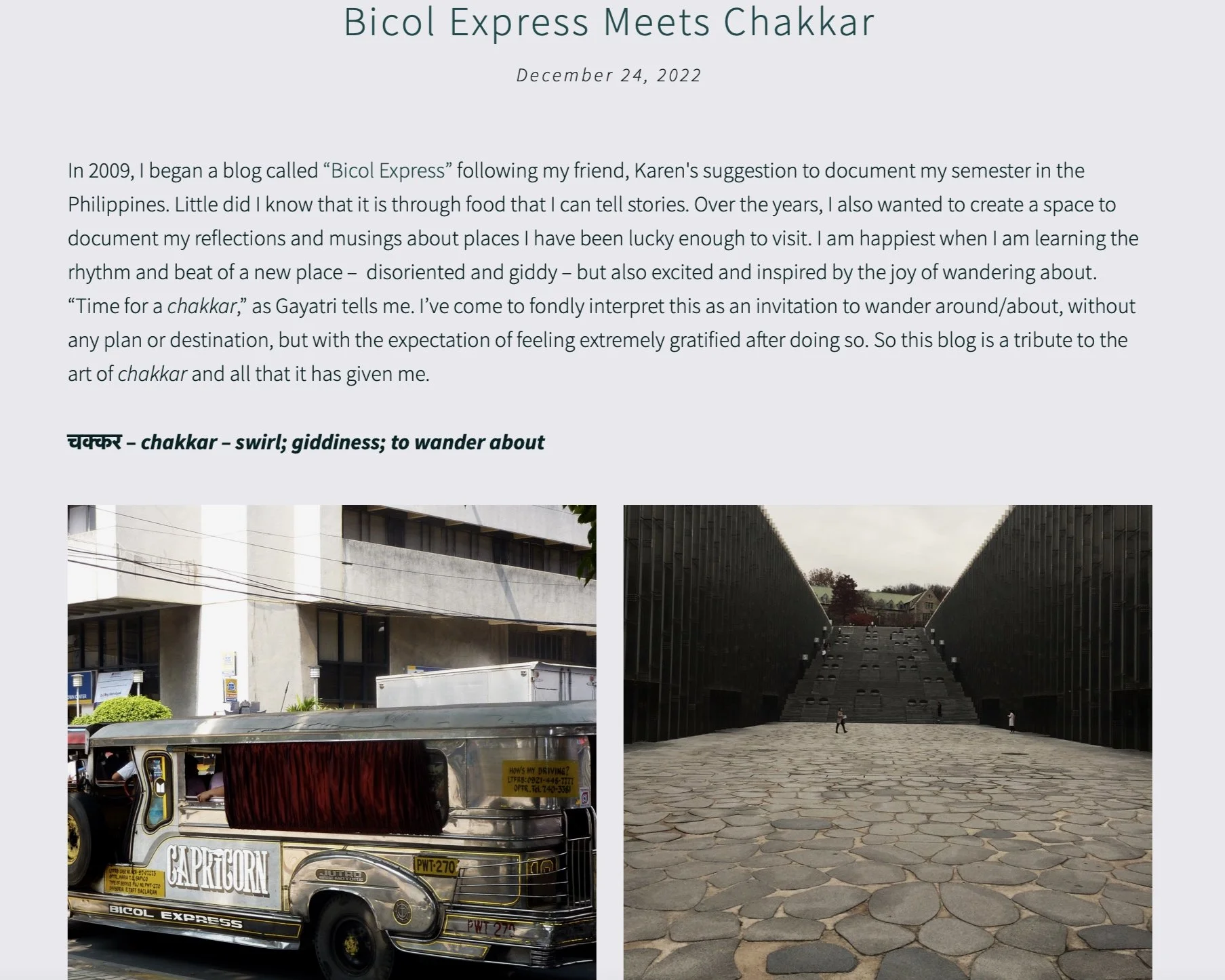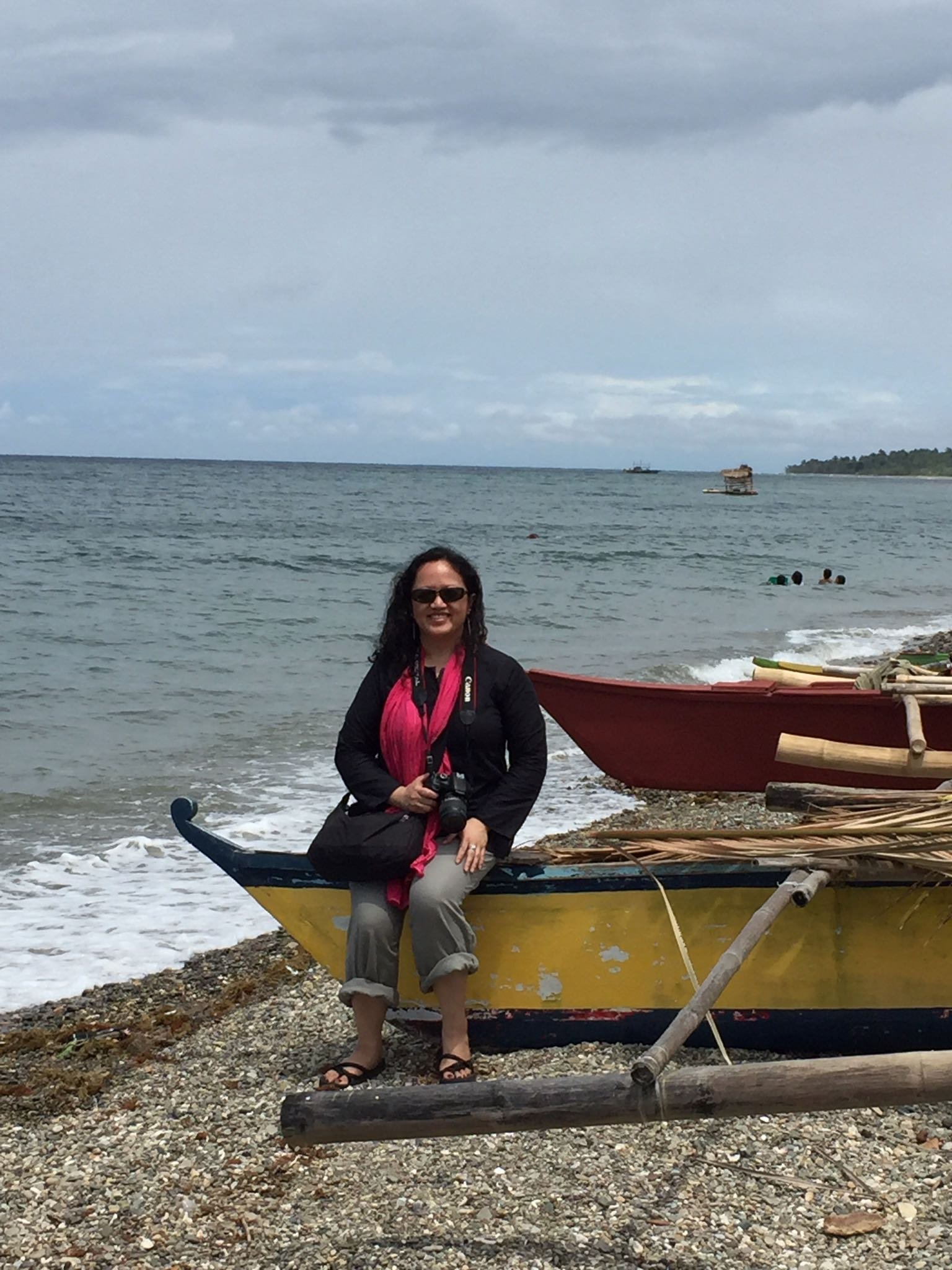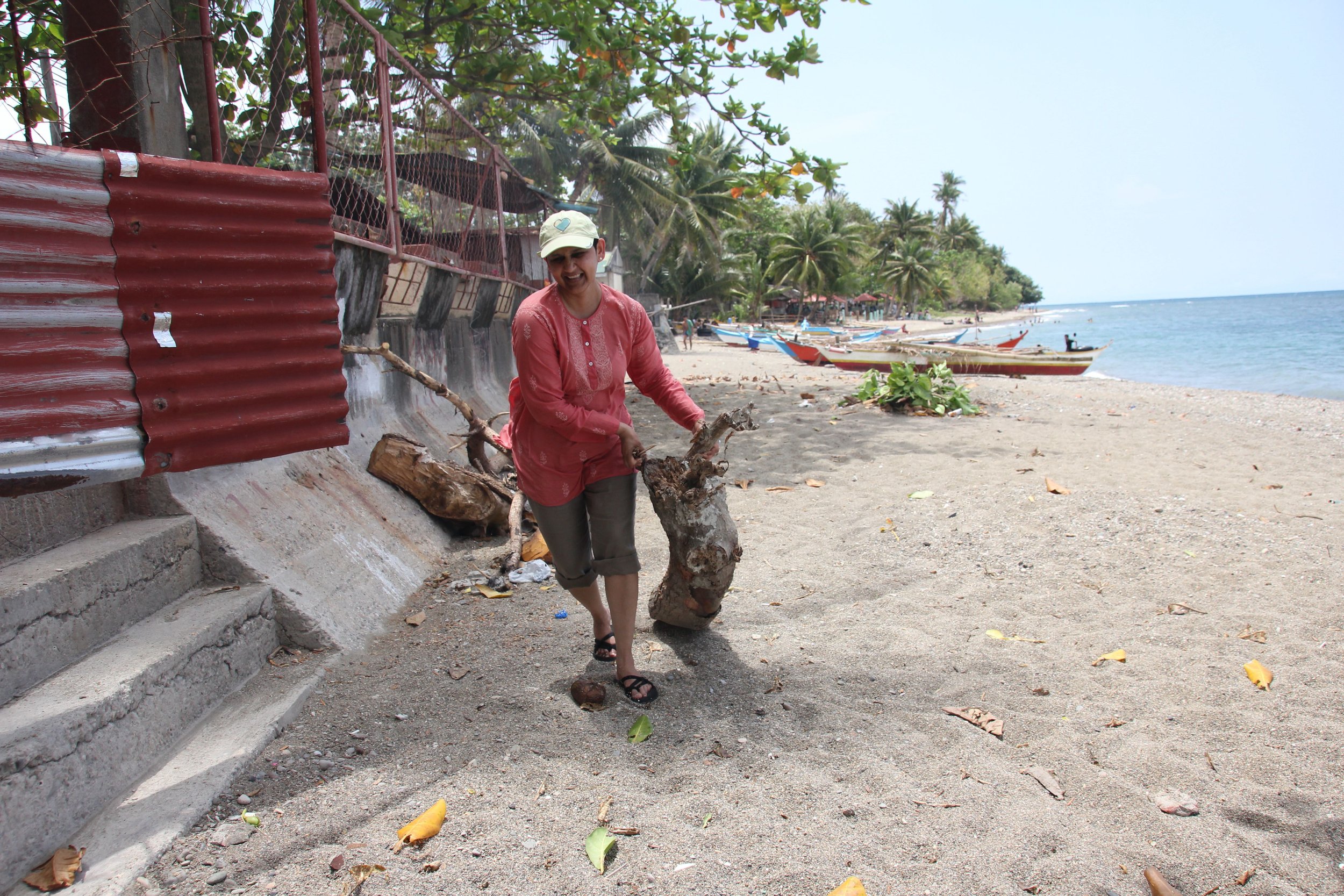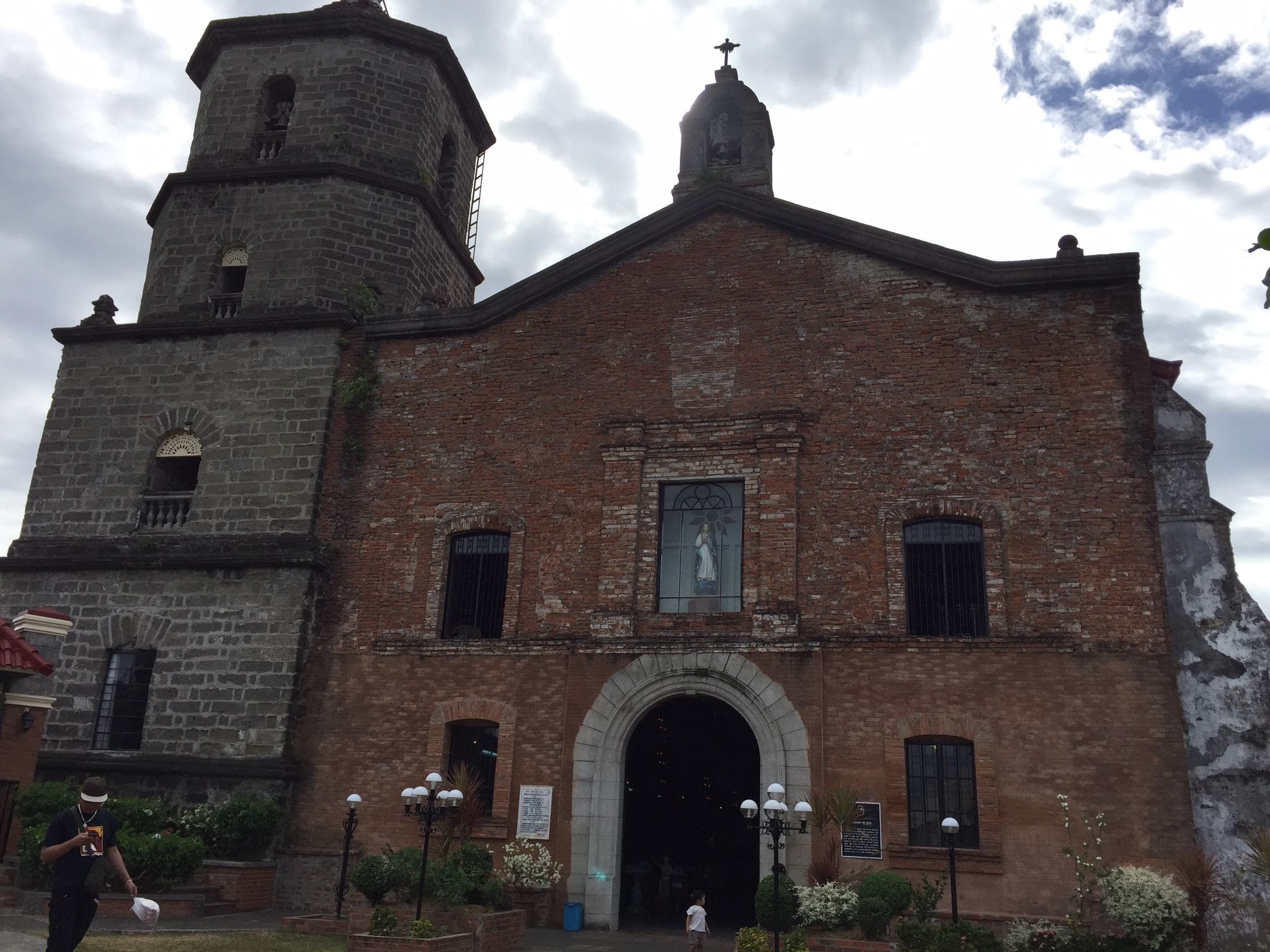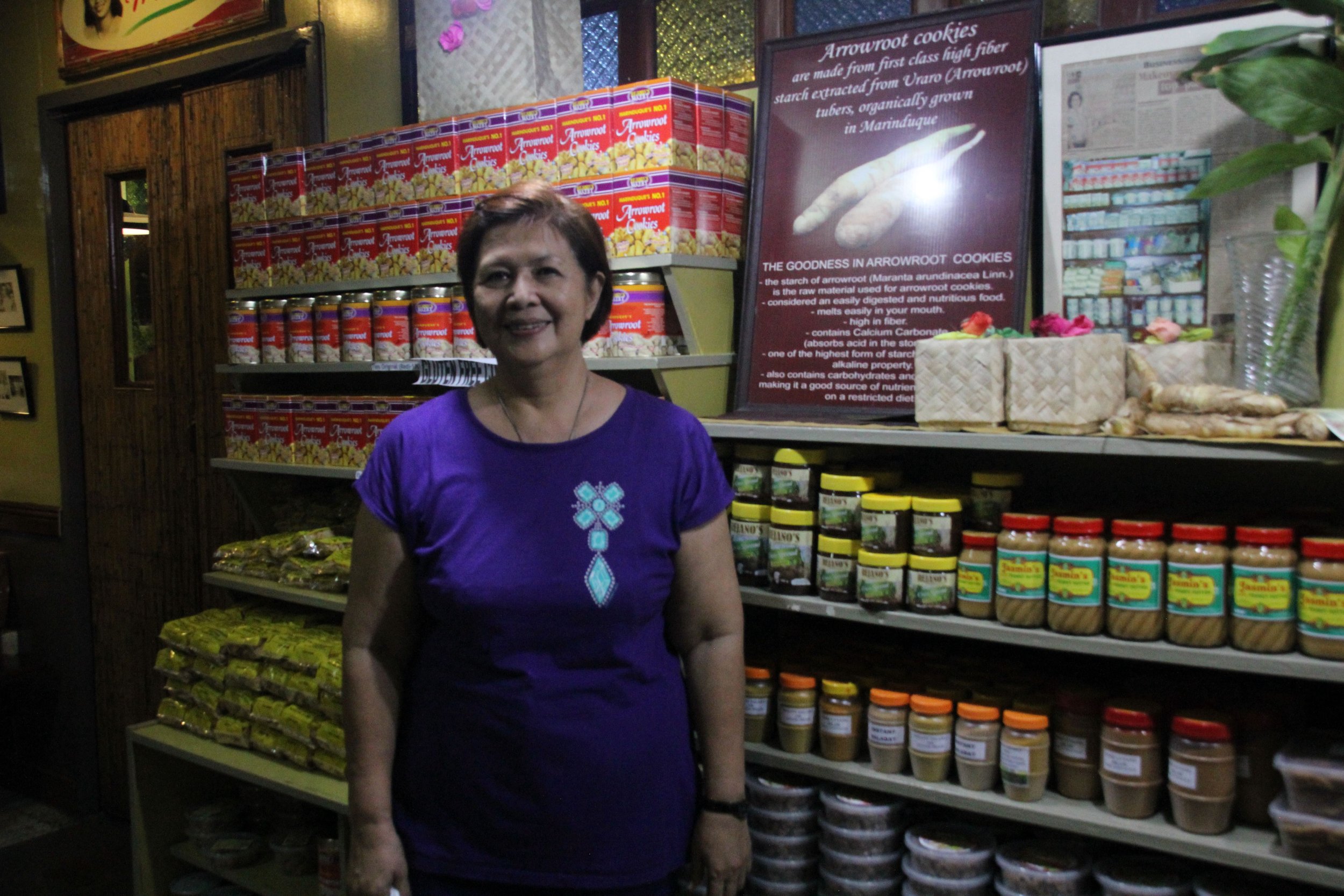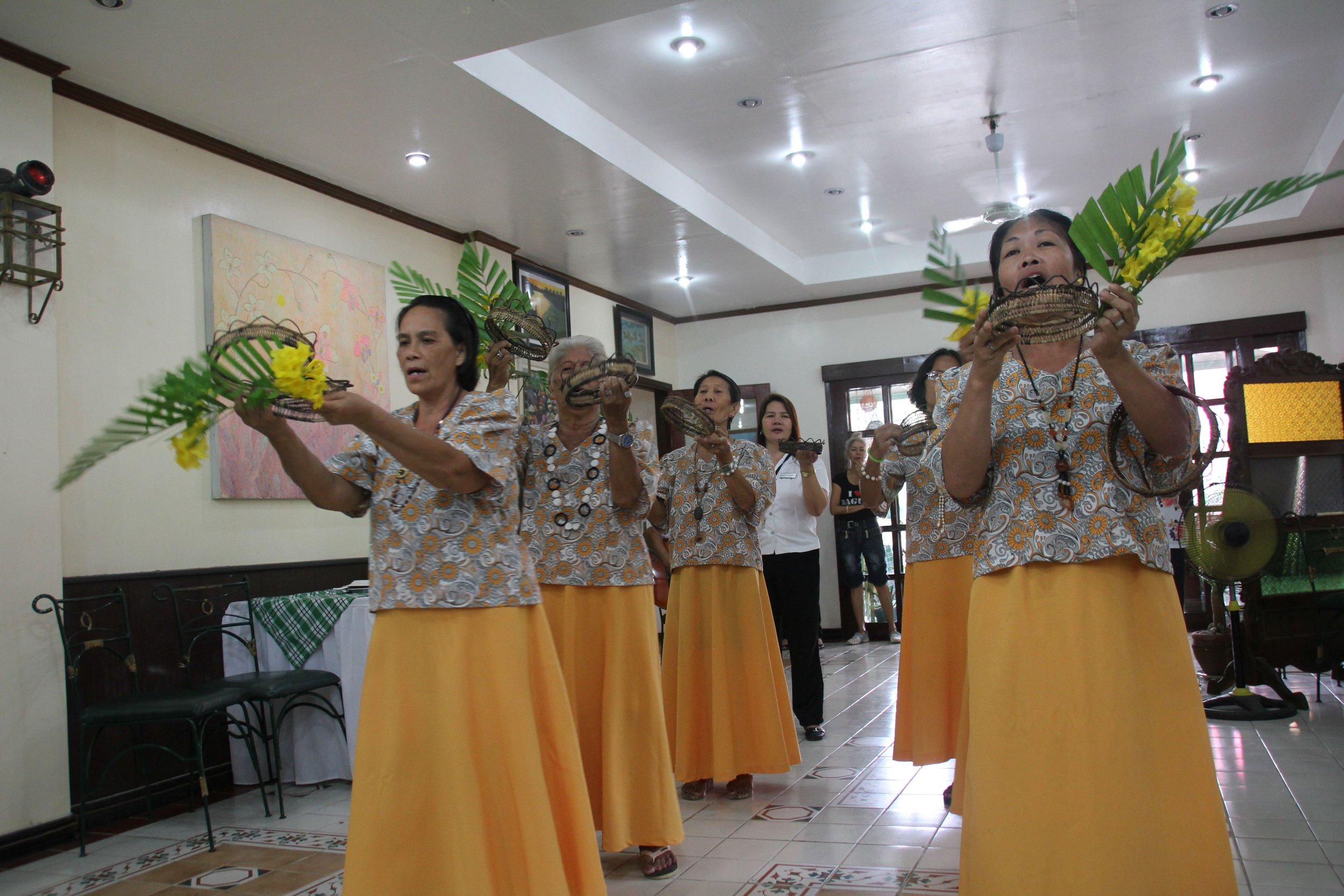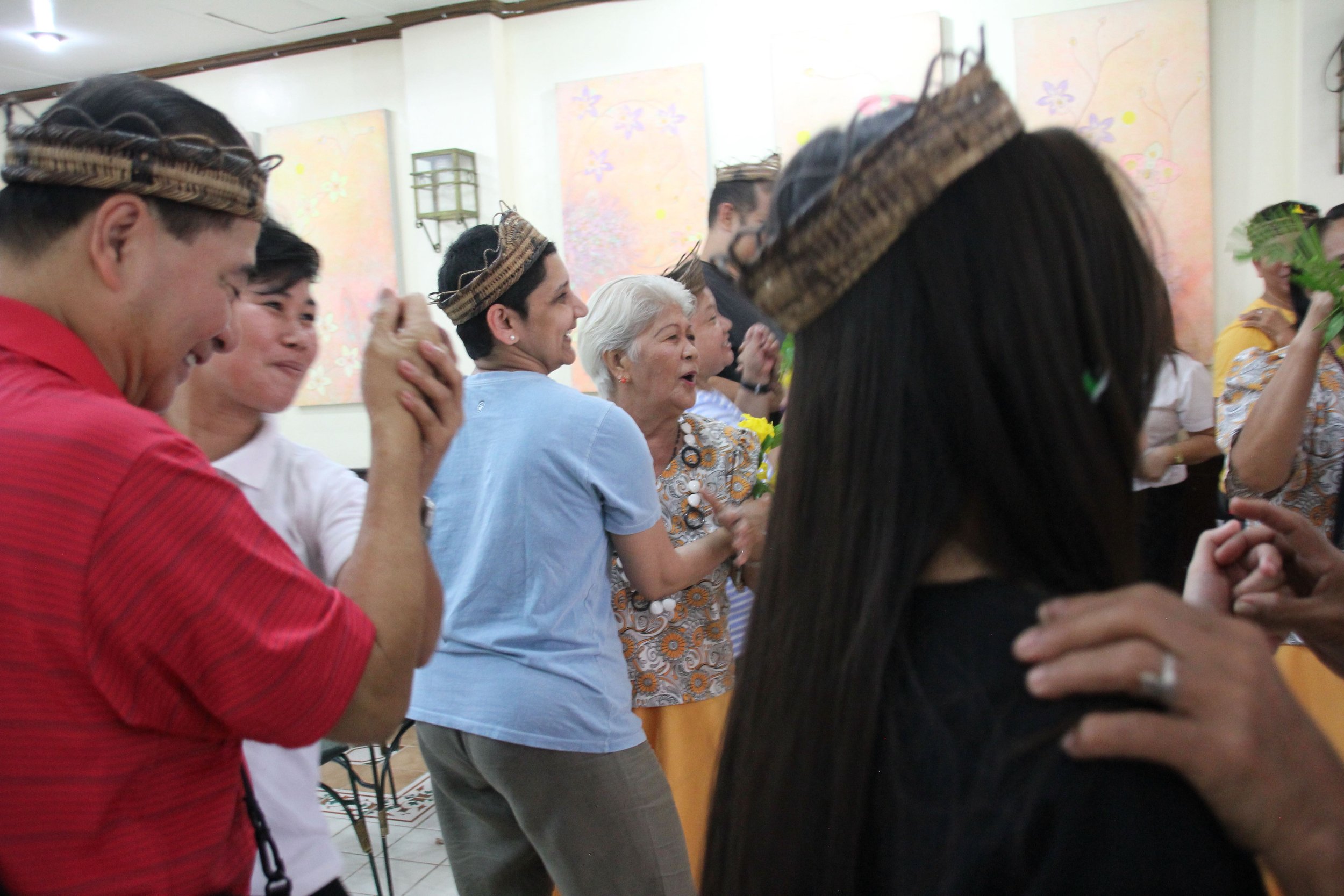Click here for the Bicol Express Blog
〰️
Click here for the Bicol Express Blog 〰️
"Holy Friday" on the island of Marinduque began with a 5 hour wait in a very orderly, winding, circular line with some of the calmest people (despite the ridiculous lack of information and erratic schedule of buses), a 10 hour bus ride from Cubao/Kamuning to Lucena, another 4 hours on the Dalahican pier in Lucena waiting for tickets in 100 degree Fahrenheit heat with hundreds of exhausted and vociferous people demanding that ferry tickets be released, a 2.5 hour ferry ride to Marinduque's Balanacan Pier, and a 45 minute ride on a sardine-packed jeepney (sitting next to the driver).
We arrived in the early evening – around 7:30 pm- to Tahanan sa Isok (House in Isok) – a house located on a quiet street. The entrance was filled with beautiful plants – many of which were flowering. We were welcomed by a friendly gentleman who quietly led us up to our room with minimal information about how things worked in this hotel. We bombarded him with questions like “When is breakfast? Where is a good place to have dinner right now? Where is a good place to watch the Moriones festival? We quickly learned the pace of this hotel – which really does not have the rigid, strict, and sometimes, unfriendly professionalism that comes with a typical hotel operation. They take the effort to make you comfortable and serve you but without the high-brow veneer of superficial hospitality one finds in some establishments. The promise of hot showers was not always fulfilled when they had a full house. So one either has to bathe really early in the morning (5 am) to beat the rush, or request a staff member to literally bring a kettle of hot water to pour into our bucket of cold water in order to take a (tepid) bath. They offered basic accommodations but with the fullness of the Marinduque spirit.
The owner is a former employee of the United Nations, who lived for several decades in Austria with his wife (they are now in their 80s). Inspired by the family-run inns in Austria, they decided to renovate their ancestral home and try to provide a similar family-run “home away from home.” They claim not to have had any experience in hotel management but forged ahead with a vision to create a “homey” setting that made guests feel as if they are staying in someone’s house. They come to the island frequently and when they do, they stay on the 3rd floor of the house – which is their residence. The staff they hire are either family members (like “Jinky” who is their niece and serves as the main manager) or tenants of some of their island properties. They are evidently good employers and their staff seem quite loyal to them and the place. Unlike other workers (of the competing Boac Hotel for instance), who seem to work 12 hours non-stop, the staff here are asleep by 9:30 pm and they seem able to participate in the Moriones festival, come to work after they have attended mass, and take a day off. “Miss Perla” served our breakfast every morning – “Dasilog” – daing (local fish marinated in garlic, pepper, and vinegar and then deep fried), one fried sunny-side-up egg, two slices of tomato, and “brewed coffee.” She is also the one who did our laundry and made sure the clothes were ironed (the latter was apparently an unusual, special request). She is also a mother of two kids who can be found running around the house looking for her and occasionally asking for snacks and junk food from the “guest” refrigerator. Some of the staff here are also key participants of the Moriones festival such as Edison (FB name is “Chanel”). He was one of the Morion soldiers and in May, he told us proudly, he will be Cleopatra for the Flores de Mayo Festival. He is quite fond of India – and says he could easily spot Indians because of their “beautiful eyes.” He was quite fond of Gayatri! Then there is “Ms. Marilyn” who booked our room and also made sure we tasted the (in)famous “Bibingka lalaki” (male/masculine bibingka) which, according to locals, acquired its name from the fact that it has “itlog” or eggs, i.e., balls, we were always told with a wink and a chuckle. She claimed that we needed to taste this “special” version, which we could not buy in the palengke (marketplace)… so she kindly added us to her order.
Photos by Anna Guevarra and Gayatri Reddy
“Jesus Christ would like to thank his hair and make-up artist:” The 2016 Moriones Festival
On the morning of Friday – March 25, Edison/Chanel told us that we should go to the Boac Arena so we could see the Morion soldiers get ready and prepare themselves for the Senakulo (a Lenten play depicting the suffering, death, and resurrection of Jesus Christ). What we witnessed was street theater and queer pageantry at its best, to re-enact the crucifixion and resurrection of Jesus, including the two-day long search for Longinus, a blind soldier who speared Jesus and later became a self- proclaimed disciple after he regained his eye sight when Jesus’ blood dropped in his eyes… and was beheaded for it! The Morion soldiers (including Longinus and Jesus Christ) volunteer for this part and we are told that they often make a wish for good health as part of this process. To play the part of a soldier demands major dedication, resolve, and a long-term commitment to this role. We met a Morion (Roman) soldier who has been playing this role for 20 years. Others told us that it cost 5000 pesos to participate as a Morion, money that could well be spent elsewhere. But people of all ages - young and old-, male and female, seem to take immense pride in participating in this town festival; they gather and chase after the processions, snapping photos, taking selfies, as if this was their first time, and the whole town appears to take enormous pride in this spectacular annual performance. As part of the “performance,” Jesus Christ and the two “thieves” walk the streets of Boac bearing crosses while being flagellated by elaborately clothed Roman soldiers (in velvet and fur capes, with individually crafted masks, often in the image of the latest “Roman” movie such as Troy, or their rendition of Darth Vader or a zombie), before being publicly “crucified” (they are merely tied to the cross and not actually crucified, thank Jesus!), for the viewing pleasure of the whole town. All of this, of course, taking place in the middle of a 100 degree blazing hot day, with the Moriones wearing their thick capes and their heavy wooden masks all day, everyday, for the entire holy week. But in case their resolve/enthusiasm flagged, they could replenish their energy with some hard-boiled quail eggs and finish it off with a cold-ish Yakult (probiotic) drink from the local street-vendors plying their wares along the Jesus path!
The final “act” of the festival took place on Saturday, March 26 with the infamous “pugutan” (beheading) of Longinus – so intrinsic to this town that even the Boac street signs points to this as a destination site, along with the cathedral and municipio or administrative office. Not quite sure what to expect, we headed to the arena to join the entire town! It seemed like every single member of the town was there with their friends, families, grandparents, infants, guests, all ready to witness a spectacular display of great imagination, creativity, and grandeur. The special effects (strobe lights to mimic lightning), the props (moveable rocks from where Jesus emerged upon his resurrection), the Parthenon-inspired center stage, and the “arena” reminiscent of a coliseum were simply magnificent. We squeezed ourselves in between a father and his 4-year old son who kept asking “may pugutan na?” (is the beheading taking place now?), and two young girls eagerly slurping a chocolate shake and munching on fried garlic peanuts, while we all waited, interminably it seemed, while Jesus and the cast finished getting ready and posing for the many, many, photo-ops before the start of the production.
The play started two hours later than scheduled but with the cool breeze and the festive surroundings, the entire township patiently waited and enjoyed each other’s company. Eventually, a voice beamed through the giant speakers to welcome the audience and introduce every cast member of this year’s festival. Jesus Christ was clearly the superstar and merited his own acknowledgements. “Jesus Christ would like to thank his hair and make-up artist” we were collectively told, before the introductions proceeded.
The dialogues were well narrated and the actors brilliantly dramatized their lines through their gestures and movements. From a distance, we could not see their lips move, but their body gestures were in brilliant sync with the narration. The play lasted for a couple of hours – moving seamlessly from one scene to the next – from the spearing of Jesus on the cross, the tension between Pontius Pilate and Claudia, his wife, the well choreographed Belly dancing (don’t ask!), the resurrection of Jesus Christ, Pontius Pilate’s tortured dream sequence, and eventually, Longinus’ “conversion” and his beheading. We were among the few who stayed until the very end with most people leaving right after Jesus’ resurrection. Although it occurred with clockwork regularity every Easter, it looked and felt like the entire town came out for this event, marking and celebrating it with pride.
Easter at the Pebbled Ihatub Beach
We originally wanted to get to Santa Cruz, which has an amazing sand bar, once you take a bangka (small boat) out, beyond the town. However, after hearing about the travel time and the uncertainty of getting a jeepney or any transportation back, given the Easter weekend, it did not make sense to venture too far. Ms. Jinky recommended we check out St. Claire Monastery – a few miles away from the heart of Boac, on the border with Mogpog, the next town, and a nice tricycle ride up a hill. From there, we tried to catch a tricycle to Ihatub beach. As we were haggling/negotiating with the tricycle driver (who asked for 100 pesos), a woman who overheard our conversation came out of her house to give us some cost-saving tips – almost seeming apologetic for what the other driver was going to charge us. Her husband – who is also a tricycle driver – drove up at this point, and she herself asked him how much he would charge for a trip there. 100 pesos too! They offered to take us to the main town for 20 pesos, and from there we could find another tricycle who could take us to Ihatub beach. When we got into town, they very kindly looked for a tricycle driver who would take us there. “Ang bayad ay 15 pesos lang” (the fare should only be 15 pesos), he whispered to us. We got in a tricycle that already had a female passenger who had just come from the market – evidenced by the bags of meat, fish, and produce she had in front of her. She very kindly let us sit inside the cab while she sat behind the driver. We weren’t quite sure where we were headed but when we reached the beach area and were about to hand them the fare, they refused to take our money and said that they weren’t on their regular travel. They were giving us a ride on their way home. We tried to offer them a fare and they kept refusing it. As they dropped us off at the entrance to this public beach, we could hear someone yelling at them to ask who we are – to which they chuckled and said “bisita naming sila” (they are our guests”). We certainly felt like their guests – entertained with kindness and hospitality that we did not expect; this is perhaps one of the unique and most admirable features of this island and its people – a generosity of spirit and the kind of honesty that is so different from the hardened Manila folk we were used to dealing with (including ourselves in this category - as cynical, mistrusting “foreign” tourists who were convinced the “locals” were out to gyp us!).
Photos by Anna Guevarra
This pebbled beach was filled with mostly locals celebrating Easter by enjoying the water with their families and friends. We walked around a few parked bangka (boats) but eventually settled underneath a tree for some much needed shade. It was nice to just sit and enjoy the cool breeze, sunshine, and the sounds of playful laughter as children played on the “beach” at the edge of the water, under the watchful gaze of their parents and grandparents.
Photo by Anna Guevarra
The day ended with us attending the “Children’s Mass” at the Boac Cathedral. Though the mass was dedicated to children and involved children reading the liturgies, it was well attended by adults as well, with the cathedral filled by Marinduqueños who gathered to celebrate the end of Easter. A beautiful church on top of the hill that was first established in the 16th century by Augustinians, then occupied by Fransiscans and eventually, Jesuits, exuded an air of solidity and calmness. Clearly, even as it had been renovated and “modernized,” some parts of the church, including the ramparts, dated back to its initial foundation in the 16th century. We were late for mass, and slunk in to the back of the church, alongside a few local, clearly devout families. Mass lasted an hour, with a sermon on the importance of this event of Christ’s resurrection, and multiple liturgies read out by select choir boys and young adults who had clearly taken a great deal of time and effort to practice the enunciation of the texts/passages they were reading aloud to the congregation. It ended with collective hymns sung by the choir, with the congregation joining in during the chorus, followed by the pastor and his assistants walking down the center aisle, throwing holy water on the congregation.
Photo by Anna Guevarra
Marinduqueño culinary delights: Uraro Cookies and Bibingka lalaki (male bibingka)
Our journey is not complete without the search of local food and crafts as pasalubong (gifts/souvenirs from one’s travel). Everyone seems to talk about the uraro (arrowroot) cookies made by “Rejanos” – which has been producing these cookies for over 60 years. Known as the “home of the original arrowroot cookies,” Rejanos is owned by Mrs. Carmelita Rejano-Reyes, who inherited the bakeshop from her parents who started making these cookies in 1946. The original bakeshop is in the neighboring city of Santa Cruz, which we just did not have the time to visit, so we ventured to the only other place that sold these cookies – in the ever-busy Boac Hotel. It turns out that Mrs. Rejano-Reyes also owned this hotel and the restaurant next to it, which is always busy at all times of the day. We were lucky to come at a time when she was in this store. Seeing us browse her shelves of cookies, she very softly asked if we needed help. It did not take long for us to realize she is indeed the magic behind these cookies because of the ways her face beamed with pride talking about her cookies. “These cookies are made from pure arrowroot and not mixed with wheat. That is what makes my cookies different.” She has experimented with other flavors, like adding pinipig (puffed rice) for an added crunch, using coconut sugar which is beneficial for diabetics, enriching it with malunggay (moringga) powder, which is known to have additional health benefits, or removing sugar completely. She works with local farmers (mostly in the neighboring town of Gasan) who produce the 15 tons of arrowroot that she needs to meet the nationwide demand for her products. She has obviously made a name for herself judging from the steady stream of customers picking up cans after cans of her cookies – keeping her cashier busy and a bit frazzled. But Mrs. Rejano-Reyes does well to circulate among the customers, making sure we have tasted all the varieties and that we know the story behind her melt-in-your mouth cookies. She has also tried to diversify some of her offerings so on her shelves are pure salabat (ginger) tea produced by one of the farmers she works with, Rejano coco jam (one of my favorites), garlic peanuts (probably one of the best we’ve had!), and all sorts of malunggay-infused products like polvoron and noodles.
Photo by Anna Guevarra
But one Marinduque culinary “delight” that everyone also talks about is the infamous “bibingka lalaki” (which literally translates to male bibingka). We first learned about this from Ms. Marilyn who encouraged us to go to the market to look for this delicacy. So off we went to the market and found a section that seemed to be bustling with people. We saw piles of this bibingka proudly sold by these two women. We asked why it acquired this name. They both reply with a giggle while covering their mouths - “kasi may itlog” (because it has eggs). So there you have it.
Photo by Anna Guevarra
“In Marinduque, every visitor is royalty”: The Putong (to crown) Ritual
On our last day, all of us who stayed in this house were gifted by a beautiful ritual called “putong.” We are told this is a tradition of welcoming and honoring visitors to the island. A group of women wearing yellow saya entered the house singing, accompanied by a guitarist. The owner of the house sang a few lines as the women came in the house swaying rhythmically to a joyful melody. They carried palm leaves, flowers, and these crowns made of rattan. They danced with them and invited all of us to join them - even Gayatri was pulled in. As we danced, they each gave us these crowns - with a loving message that “in Marinduque, every visitor is royalty.”
